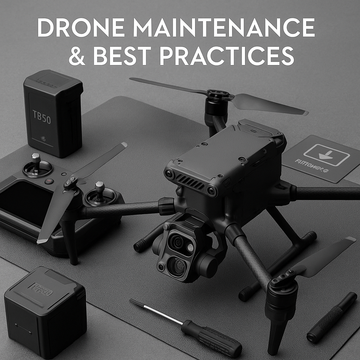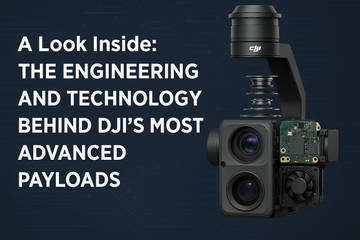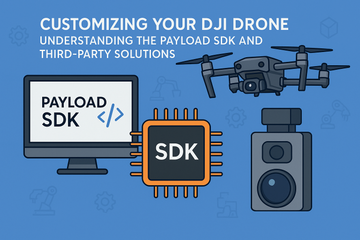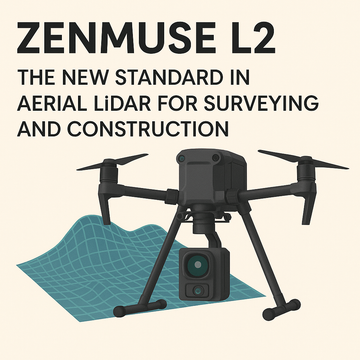Introduction
The DJI Matrice 30 (M30 series) is a rugged and versatile enterprise drone built for demanding operations. But like any advanced system, consistent maintenance is key to ensuring optimal performance and safety. This guide covers the best practices for maintaining your M30, with a focus on battery care, firmware management, and long-term operational tips.
1. Battery Care: TB30 Intelligent Flight Batteries
The TB30 batteries power the M30 with features like self-heating for cold weather performance and hot-swapping for continuous operations. To maximize their lifespan:
-
Charge and Store Properly: Keep batteries between 20–30°C (68–86°F) for charging/storage. Avoid prolonged exposure to extreme heat or cold.
-
Use Auto-Discharge Mode: TB30 batteries automatically discharge to safe storage levels if unused. Store them at ~50–60% charge.
-
Cycle Regularly: Perform a full charge/discharge cycle every 3 months to maintain health.
-
Monitor Battery Health: Use DJI Pilot 2 to track charge cycles, capacity, and error warnings.
2. Firmware Updates & Software Management
Keeping your drone up to date is critical for safety and compatibility.
-
Regular Firmware Updates: Update the M30 aircraft, DJI RC Plus controller, and TB30 batteries through DJI Pilot 2.
-
Check Before Missions: Always confirm firmware is current before deployment, especially for compliance-sensitive operations.
-
FlightHub 2 Sync: Enterprise teams should integrate updates across fleets for consistency.
3. Routine Physical Inspections
Conduct pre-flight and post-flight checks to prevent issues.
-
Propellers: Inspect for cracks, chips, or wear. Replace damaged props immediately.
-
Airframe & Arms: Ensure folding arms lock securely; check for loose screws.
-
Sensors & Cameras: Clean lenses and sensors with microfiber cloths; avoid scratches.
-
Landing Gear & Gimbal: Confirm stability and proper alignment.
4. Environmental Considerations
The M30 is IP55 rated, but maintenance still matters:
-
Dust & Water: Wipe down drone after operations in rain, dust storms, or high-humidity environments.
-
Temperature Extremes: Allow the drone to acclimate when moving between hot and cold environments to prevent condensation.
-
Transport Protection: Use DJI’s official case or a rugged hard case to prevent shock and vibration damage.
5. Long-Term Operational Best Practices
-
Flight Logs: Regularly review logs for error codes and unusual performance trends.
-
Calibration: Recalibrate IMU, compass, and gimbal when prompted or after major transport.
-
Team Training: Ensure pilots are trained on DJI Pilot 2 features, emergency procedures, and safety protocols.
-
Spare Parts & Redundancy: Stock extra propellers, batteries, and charging hubs for uninterrupted operations.
Conclusion
By following these maintenance and best practice guidelines, organizations can extend the service life of the DJI Matrice 30 while ensuring mission success. With proper battery care, firmware updates, and regular inspections, the M30 remains a reliable enterprise drone for public safety, utilities, and industrial operations.
#DJIMatrice30 #DroneMaintenance #DJIEnterprise #TB30Batteries #DroneCare #DroneSafety #AerialOperations #PublicSafetyDrones #IndustrialDrones #DroneBestPractices







